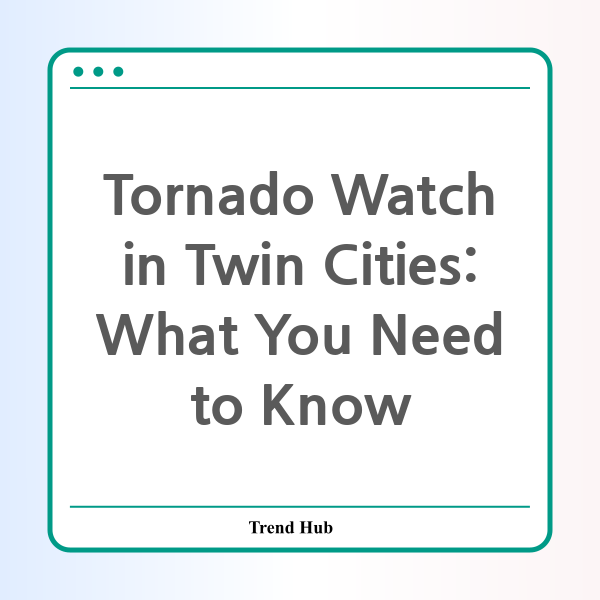* This website participates in the Amazon Affiliate Program and earns from qualifying purchases.

Are you prepared for severe weather? The Twin Cities are currently under a Tornado Watch, and the conditions are ripe for strong storms throughout the evening. Here’s what you need to know to stay safe.
This evening, residents of the Twin Cities and much of southern Minnesota are advised to stay alert as severe storms approach the area. The National Weather Service has issued a Tornado Watch, effective until 11 p.m., signaling that conditions are favorable for the development of tornadoes and severe thunderstorms.
Current Weather Situation:
- A Tornado Watch is in effect for the Twin Cities metro and surrounding areas, extending through southeastern Minnesota and western Wisconsin.
- Severe thunderstorms were reported moving across Minnesota, with tornado warnings issued for several counties, including Benton, Sherburne, Stearns, and Wright.
- The storm system is expected to bring damaging winds, large hail, and a heightened risk of tornadoes, particularly in the late afternoon to evening hours.
Areas at Risk:
Here are some of the specific cities that could be directly affected by the storms:
- St. Cloud
- Becker
- Foley
- Clearwater
- Clear Lake
- Santiago
- Glendorado
- Duelm
- St. Cloud Airport
- St. Augusta
What You Should Do:
As a precaution during the Tornado Watch, it’s crucial to remain vigilant:
- Monitor local weather stations and alerts for real-time updates.
- Have a weather radio or a reliable weather app on your phone to receive alerts and warnings.
- Prepare an emergency kit that includes essentials like water, food, flashlights, batteries, and important documents.
- Have a designated safe room such as a basement or an interior room on the lowest floor of your home.
The Severity of the Situation:
The Storm Prediction Center has placed the Twin Cities area at a moderate risk for severe weather today. The afternoon wave of storms is predicted to be more potent than the morning wave, which, while not damaging, did produce heavy rainfall and small hail. Meteorologists warn that the late afternoon to evening timeframe will be the most dangerous with strong tornado potential expected to peak during these hours.
Interestingly, this year has not seen significant tornado activity in Minnesota, but that could change quickly as this storm system approaches. Tornadoes have occurred daily across the United States recently, highlighting the potential severity of the current weather patterns.
Looking Ahead:
This pattern of severe weather isn't just limited to Minnesota. In fact, millions are at risk across the Upper Midwest, with the potential for storms extending into the Mississippi Valley and Plains. The current system is set to push east, which could result in continued threats of severe weather for several days.
For the Twin Cities, the storm is expected to move out of the metro by sunset, but the risk of severe weather remains strong into the evening. Relaying timely weather updates and preparing for possible evacuations are crucial as the situation evolves.
Stay Safe!
In conclusion, safety during severe weather should always be the priority. Stay informed, be prepared, and make sure your family and friends are aware of the current situation. Together, we can weather this storm.
* This website participates in the Amazon Affiliate Program and earns from qualifying purchases.